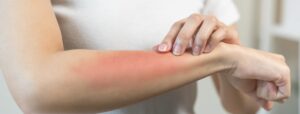The human body operates at 37 degrees Celsius and is quite sensitive to external variations. To do so, it has mechanisms that regulate its temperature (such as sweat), distribute heat through the blood and expel it to the outside.
When heat stroke occurs, these mechanisms stop working, causing temperature to rise and a large amount of body fluids to be lost, increasing the likelihood of neurological damage and even death.

Among the most important symptoms that indicate the presence of heat stroke are dizziness, confusion, disorientation, excessive sweating at first followed by a lack of sweating, redness and dryness of the skin, fever with a body temperature of more than 39.4 degrees Celsius, inappropriate behavior (starting to take off clothes regardless of where one is), accelerated heart rate with a weak beat, headache, unconsciousness, and convulsions.
In order to maintain the health of the population, the Ministry of Health issues the following measures to prevent heat stroke:

- Avoid exercising or doing intense activity outdoors between 11:00 a.m. and 3:00 p.m.

- Do not expose yourself too much to the sun during the first few days when we face high temperatures.

- Also recommended to drink plenty of fluids even if you do not feel thirsty, at least 2 liters of water a day; wear light, light, cotton clothing that allows perspiration; gradually acclimatize to the heat, allowing the body to get used to temperature changes; eat light, fresh food, preferably raw, natural plant foods (salads, fruits and vegetables), and do not stay in parked or closed vehicles.

- It is important to take breaks from time to time if you are doing hard work or physical exercise. If you experience symptoms of dizziness, stop working and rest for a while in the shade. If you stay at home, try to keep the interior cool and well ventilated.
References
De Salud, S. (s. f.). Preventive measures for heat stroke. gob.mx. https://www.gob.mx/salud/prensa/medidas-preventivas-de-golpe-de-calor

